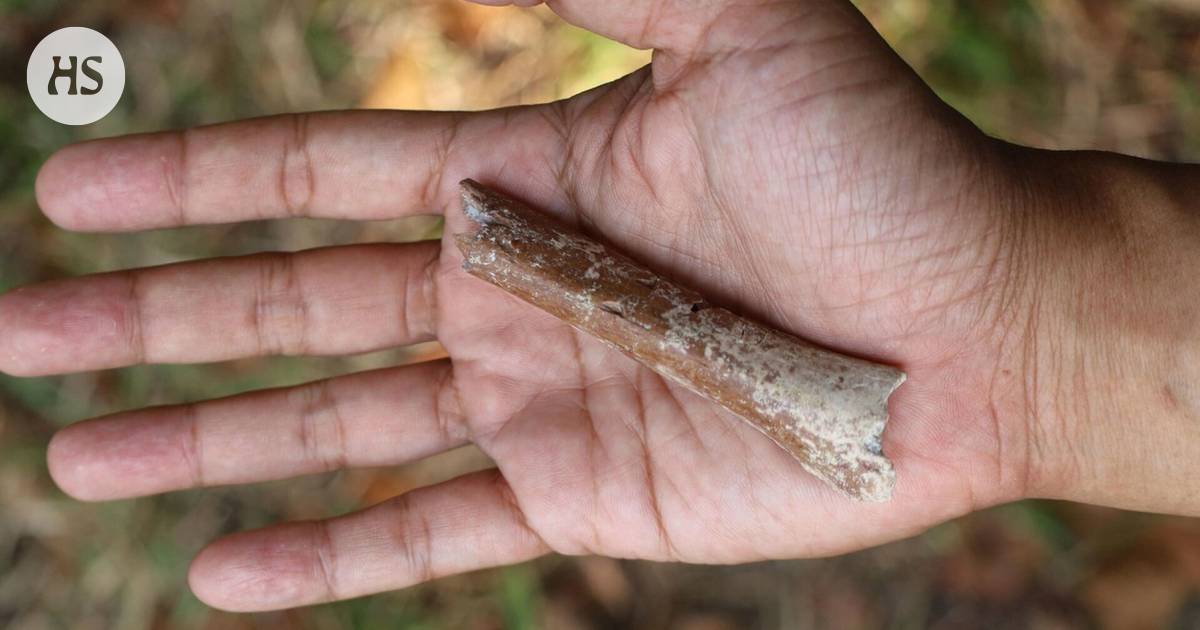Paleoanthropology|On islands, large animals often shrink.
The summary is made by artificial intelligence and checked by a human.
The human humerus from Flores confirms that the species quickly shrunk to about a meter in length.
The Flores Man lived on the island of Flores and became extinct after the arrival of modern man.
700,000-year-old fossils of Flores man were found at the Mata Menge excavations.
Researchers believe that the Flores man evolved from upright people who arrived from Java.
Paragraph the humerus of a small Flores human confirms that this ancient relative of ours shrank surprisingly quickly to about a meter in size.
The existence of a related species, also called a hobbit, was discovered 20 years ago when human fossils were found in the Liang Bua cave on the Indonesian island of Flores. They were 60,000 years old.
Modern humans arrived on the island ten thousand years later, and it is believed that the extinction of Flores began.
Evolution often reduce large animal species that live in isolation on islands. This happened to a Flores person as well. The shrinking of island animals can be due to the scarcity of food or the fact that there are no predators on the island, in which case there is no defensive need for a large size.
Researchers believe that the Flores man evolved from the larger upright people who washed up on the island.
Upright people lived on the neighboring island of Java more than a million years ago, and the Ancestors of the Flores people migrated from there to Flores, perhaps with trees uprooted by the tsunami or other floating remains.
One million-year-old tools have been found in Flores, which are considered the creations of upright humans. Gradually, the descendants of the newcomers from Java began to decrease.
Picture events became more specificwhen archaeologists found more Flores Man fossils, this time from the excavations of Mata Menge. They are located a little over 70 kilometers from the first discovery site in Liang Buan. These fossils are 700,000 years old.
Initially, small teeth and facial bones were found at the site. However, it was not possible to reliably determine the size of the people to whom they belonged.
Since then, researchers have found a piece of bone that was part of the humerus that connects the shoulder to the elbow. The size of the owner can already be deduced from the humerus.
Professor at the University of Tokyo Yousuke Kaifu and his colleagues reported Nature Communications – in the scientific journal, that the found part of the humerus belonged to an adult Flores human about a meter long.
The individual was six centimeters shorter than the one whose remains were once found in Liang Bua Cave.
A bone discovery shows that it took the Flores man no more than 300,000 years to shrink to his final size.
“It’s surprising but also fascinating,” Kaifu points out to the scientific journal Nature in a news article.
No other primate is known to have shrunk so quickly in island isolation.
However, the red dwarf capricorn from the island of Jersey in the English Channel shows that size evolution can be rapid. Capricorn shrank to one-sixth of the original size of its ancestors in just six thousand years.
Some have proposed that the Floresian man would have evolved directly from some earlier small-sized human species, such as the handy man. In this case, the small size would not need to be explained by the island effect.
However, the fossils of Mata Menge indicate a relationship with upright humans. According to the researchers, the jawbone and one tooth that were part of the remains more closely resemble the corresponding parts of the standing man found in Java than the handy man.
